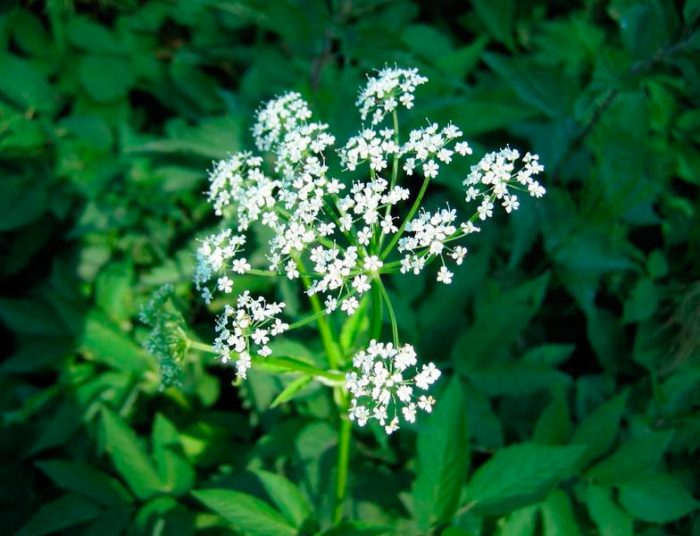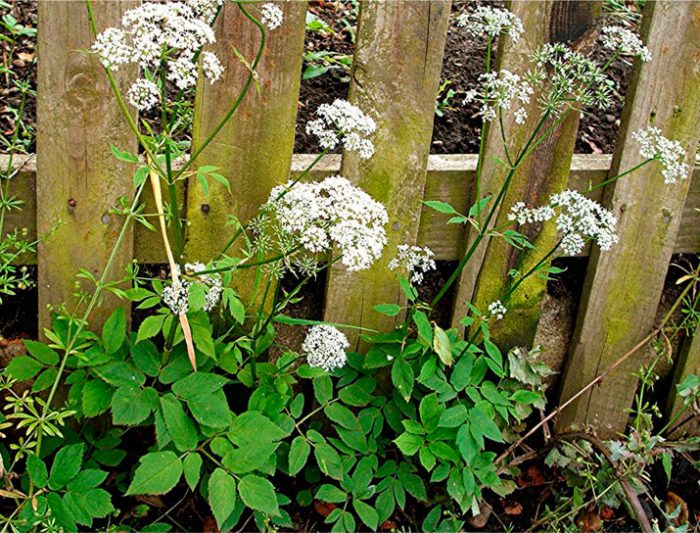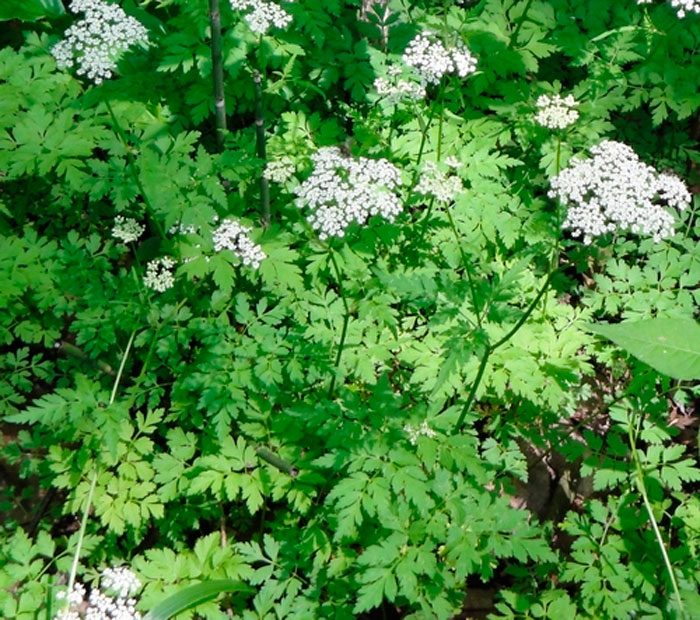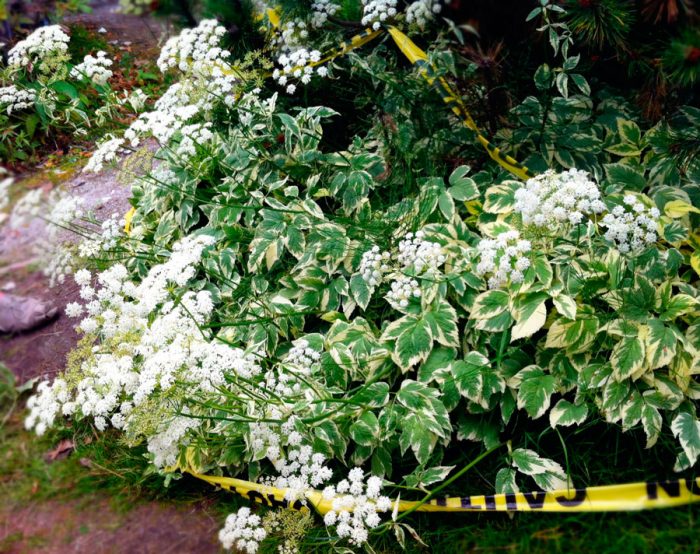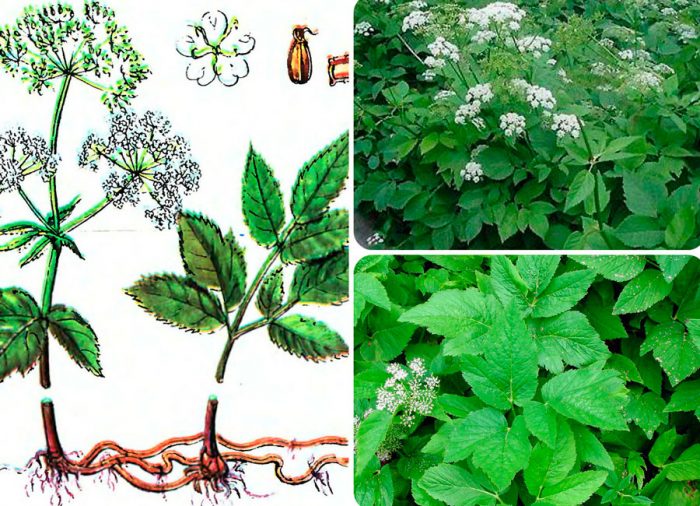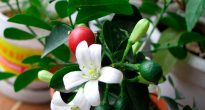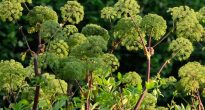The herbaceous perennial plant Aegopodium is a member of the Umbrella family. In nature, it is found in Asia and Europe. This genus unites 8 species, while the most popular among gardeners is the species - ordinary (Aegopodium podagraria), this herb is used as a melliferous, fodder, medicinal and vitamin. However, it should be borne in mind that runny is a weed, which is quite difficult to get rid of, but its variegated form is very popular among gardeners, even despite the fact that it is distinguished by aggressive behavior.
Content
Features of dreaming
In such a plant as runny, the rhizome is horizontal and creeping. The straight, grooved, hollow stem reaches a height of about 100 centimeters, it branches in the upper part. Double-triple lower leaf plates consist of elongated pointed leaves, sharp-serrated along the edge, which reach 80 mm in length. The triple upper short-petiolate leaf plates are smaller than the lower leaves. The front surface of the leaves is practically naked, and on the seamy area there is pubescence, and the venation of the plates is pinnate. Small white flowers, 15–20 in each, are part of the umbrellas, reaching 15 centimeters across, which in turn form a complex inflorescence of 20–30 rays. Umbellate inflorescences growing in the upper part of the stem are fertile, while the lateral ones are infertile. The fruit is a two-seeded box of brown color and oblong flattened shape, it reaches about 0.4 cm in length.
Growing dream in the garden
Sowing rules
They are sown into open ground in the same way as other herbaceous plants. Sowing seeds is carried out in the spring or before winter. The area chosen for this plant must be limited in order to prevent its uncontrolled spread throughout the garden area. To restrict slithering along the perimeter of the site, it is necessary to dig in slate or sheets of iron, while they should go into the soil by at least 0.3 m.In order to decorate your site with decorative slush, you should buy its seedlings in a garden pavilion or a flower shop.To begin with, they must be planted in containers made of iron or plastic, at the bottom of which there are holes for drainage. And then these containers are dug into the ground in the area designated for this plant. This culture grows well under trees, as well as in shaded areas. It should be borne in mind that in a well-lit area, the variegated variety will not be very attractive.
Dullness care
Watering should be systematic. In a dry season, the frequency of watering is increased, but at the same time it must be necessarily moderate. All species and varieties that are decorative need systematic pruning for sanitary purposes. To do this, remove dried, injured and diseased stems. In order to rejuvenate such a herbaceous plant, it is recommended to completely mow it. In order for the bush to remain attractive, it is necessary to cut off the flower stalks with inflorescences that have begun to form in a timely manner, otherwise the plant will degenerate into a wild-growing form, from those seeds that have spilled out onto the surface of the soil, only an ordinary one grows.
If the snow is cultivated in poor soil, then in the first summer weeks it is recommended to apply mineral fertilizers or organic matter to the ground. But at the same time, one should be careful not to overfeed the bushes, but at the same time such a grass can grow quite normally without fertilizing the soil. Such a culture is frost-resistant, while it is able to withstand a drop in air temperature to minus 39 degrees. You do not need to cover the bushes for the winter.
Diseases and pests
In some cases, spider mites or aphids can settle on the dream. Typically, this occurs during an extended dry period. If foliage begins to curl on such a grass, then it should be carefully examined, since it is quite possible that you will be able to make out harmful insects. In order to get rid of such pests, the bushes are sprayed with a solution of Match, Aktellik or Aktara.
Another such plant can be affected by a fungal disease, for example, powdery mildew or anthracnose. For the treatment of diseased bushes, it is necessary to use such fungicidal agents as: Horus, Radomil Gold, Skor, Maxim, etc.
Types and varieties of sleepy with photos and names
How ornamental plants grow the following types of slime:
Alpine runny (Aegopodium alpestre)
This species is resistant to drought, while the bush reaches a height of about 50 centimeters. His homeland is Central Asia. The structure of the openwork umbrella-shaped inflorescences includes white small flowers. Greenish leaf blades are finely cut.
Runny variegated (Aegopodium podagraria Variegatum)
Both the previous and this species are less aggressive in comparison with the common despair, because if you start growing it on the site, then, most likely, you will not get rid of it. But most gardeners specifically sow this species for the medicinal properties that it possesses.
Dream properties: benefit and harm
The healing properties of sleepiness
Sleep contains substances useful for the human body, for example, quercitin and flavonoids of kaempferol, which have a powerful antitumor and antiviral effect. They also help to improve the elasticity of blood vessels and get rid of allergies. This herb contains falcarindinol and falcarinol, they reduce the risk of cancer, and also contribute to the destruction of fungal infections. It also contains apigenin, American scientists have found that it can stop the growth and development of malignant tumors, and can also reduce the size of existing formations. To date, an active study of the substances contained in this culture is being carried out, thanks to this, a medicine with a new principle of action on cancer cells can be created.
1 tbsp. l.dream juice tones the body and improves its immune system, which weakened after the winter period. Means made from such a herb are used as a medicinal and preventive drug in the fight against hypovitaminosis and iron deficiency anemia. The plant also has an analgesic and anti-inflammatory effect, due to which it is used during the treatment of rheumatism, arthritis, gout or arthrosis. This herbaceous plant is especially useful in spring, since at this time the human body experiences a lack of vitamins and minerals. If you eat regularly, it will lead to the normalization of digestion, an increase in the production of bile, and the elimination of inflammatory processes in the liver and gallbladder. This herb is able to eliminate swelling, and also cure kidney and bladder diseases. It also prevents blood clots from forming, and also gets rid of existing blood clots. Such a plant also has anti-inflammatory, antitumor, antifungal and wound-healing effects, which makes it possible to use it during the treatment of erysipelas, diathesis or fungal disease.
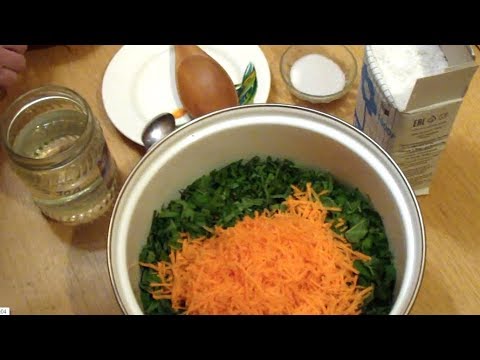

Watch this video on YouTube
Contraindications
Such herbs, as well as the means prepared on its basis, cannot be used by people with individual intolerance. To date, no other contraindications have been found.



